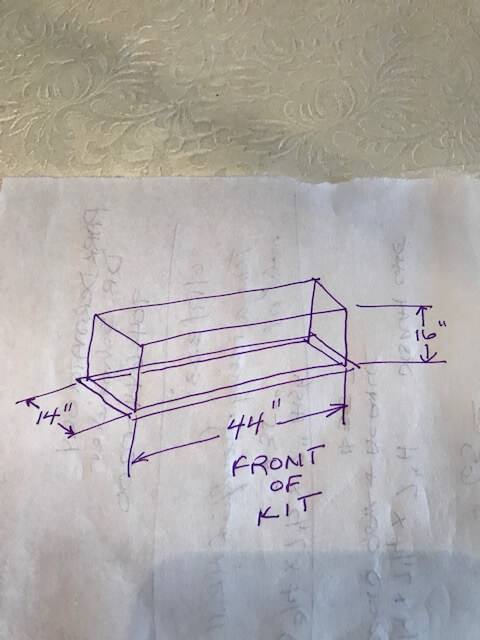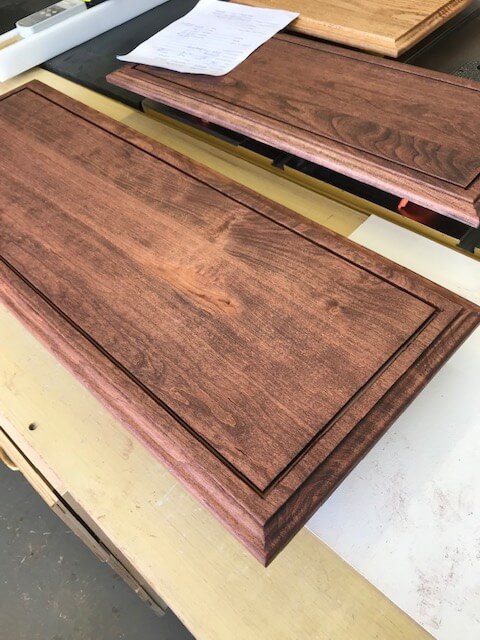With Grandpa’s Cabinets being asked to build more and more display kits for models that are very large, I thought I’d take some time to show just what goes into the building of a Custom Display Kit. The first thing I do is to make a rough drawing of just how the kit will measure out to help me determine the amount of materials I’ll need to get a finished kit.
Custom Display Case Kit Creation
Step by Step Photos
To start construction, I select the wood that will be making up the kit. There’s planks that are glued together to form a large solid base. I try to choose grain patterns that will work well together and this photo shows a display kit using Cherry wood which is actually my favorite to work with and gives a beautiful finish when stained and topcoated.
After the wood has been planed and jointed to get perfectly straight edges for accurate glue up I run it through my drum sander to get both a smooth surface and a flat surface as well. This sander will accommodate a board up to 38” wide which covers just about any size display kit I might be called on to build.
Next, I use a selection of sanders to get an even smoother finish on the base board before forming the groove that the acrylic panels will sit in as you’ll see in the next photo.
This is not the final sanding but rather it takes the wood surface down to 120 grit to show any blemishes that need addressing. The final sanding, especially with cherry, will be sanded down to a 320 grit.
After this, the board is cut to the final finished overall size for routing of the groove and the outer edges. I also cut all the pieces needed for the four corners and the framed top assembly that will hold the kit together when placed onto the acrylic panels during assembly.
The miscellaneous pieces also get their respective grooves cut and edges roundover routed before sanding to a finished smooth 320 grit.
At this point, I do the finish sanding of the surfaces of both the base and all the parts to get everything ready for staining. I stain all the surfaces, let them dry for 24 hours then topcoat with several coats of satin polyurethane.
If a customer wants a flat or gloss finish, I’m happy to accommodate that for them of course.
Now that everything has dried, I cut and assemble the top. This consists of a solid wood frame with the acrylic inserted permanently to fit exactly with the grooved base. This allows the kit to remain erect when assembled. The four corner pieces keep the panels lined up and when the grooved top is placed over the acrylic panels, everything is secure and standing proud and beautiful. The final piece to this build is the wrapping and getting ready for shipping.
I keep the protective paper on the acrylic panels to keep them safe during their travels to the customer and all other parts are shrink wrapped to keep them together and protected from scratching. I include some sample packets of scratch removers and cleaners for the customers use when assembling but the only thing that should be needed is the cleaner. The kit is then packed in 2” of solid Styrofoam and 350lb double wall corrugated to protect its journey. This costs quite a bit but I would rather err on the side of safety.

So as you can see, building a display kit is a time consuming process and this will show why it costs a little more than a display case. The kit, however, is necessary when the size of the display case is just too large to ship when packed.
UPS has weight and size restrictions and this option allows kits very large to be made and shipped successfully. It seems kits are the choice for sail ship modelers and other very large items and as long as there’s a demand, I’ll keep on building.











